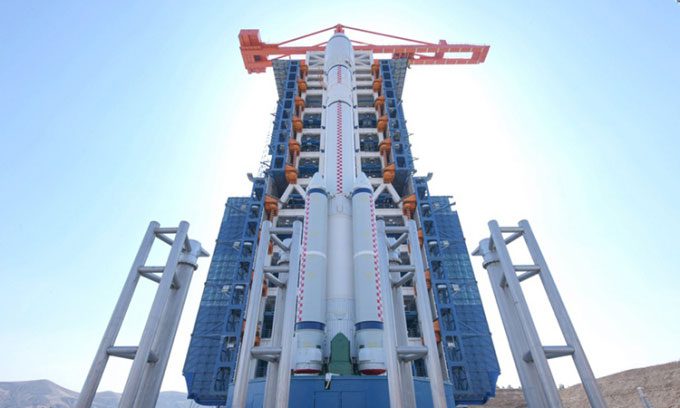The Changzheng-6A rocket, utilizing a combination of liquid and solid fuel, successfully completed its first flight on March 29.
The Changzheng-6A rocket successfully launched two satellites into orbit during its inaugural flight. (Video: CGTN)
According to Global Times, the launch took place at 5:50 PM local time yesterday from the Taiyuan Satellite Launch Center in Shanxi Province, northwest China, successfully placing two satellites into their designated orbits. This flight marks the 412th mission of the Changzheng rocket series.
Changzheng-6A was developed by the Shanghai Academy of Spaceflight Technology (SAST), a subsidiary of the China Aerospace Science and Technology Corporation (CASC).
At launch, the rocket weighs 530 tons and can carry a payload of no less than 4 tons into a sun-synchronous orbit. The Changzheng-6A is a modified version of the Changzheng-6 rocket. It stands 50 meters tall and has a diameter of 3.35 meters, featuring a design that includes three core stages combined with four auxiliary engines mounted on the lower body.

The Changzheng-6A rocket on the launch pad before takeoff. (Photo: CGTN)
CASC emphasizes that this is China’s first “hybrid rocket”. While the core stages use liquid fuel (oxygen/kerosene) for strong and stable thrust, the four 2-meter-long auxiliary engines utilize solid fuel, featuring a simple and flexible structure that provides high maneuverability and instant thrust.
The combination of liquid and solid fuel makes the rocket more powerful and faster, while also being more stable and cost-effective, thereby meeting the demands for launching various types of satellites. The introduction of the Changzheng-6A rocket will mark a significant milestone in China’s space program, enhancing launch capabilities, advancing technology development, and expanding the potential for commercial space exploration.
The two satellites launched on Tuesday include Pujiang-2, designated for scientific testing and land resource surveying, and Tiankun-2, intended for experiments in space environment detection technology.





















































